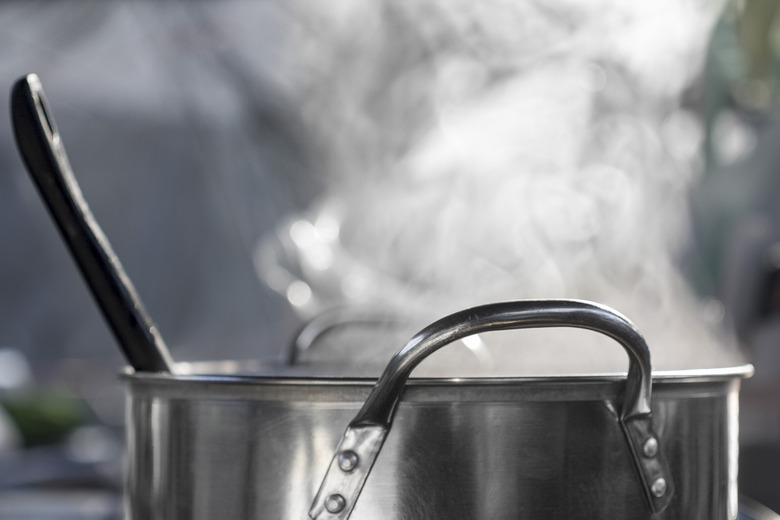How To Generate Steam
The discovery that steam under pressure could power locomotive engines and force paddles to turn on boats changed how people traveled during the Industrial Revolution. Today steam is used to sterilize garden soil and drive turbines that produce electricity in power plants. Whether you want to generate steam for passive use, such as sterilization, or to harness its force to run an engine, steam requires that one heat water to boiling.
Passive Steam
Step 1
Fill a metal container with 1 pint of water. Place the container of water on a heat source, such as a kitchen stove or hot plate. Cover the container with a lid to accelerate the heating process. The type of metal container used affects how fast the water boils. For instance, aluminum conducts heat faster than steel, resulting in the water boiling more quickly.
Step 2
Heat the water until it reaches 212 degrees Fahrenheit, the temperature at which water boils. To raise the temperature of 1 pint of water 1 degree Fahrenheit requires 1 British thermal unit (BTU) of heat, so to boil water that is 50 degrees Fahrenheit requires 162 BTUs.
Step 3
Remove the lid after the water boils. Steam will rise out of the container. You can use passive steam to sterilize such items as garden soil by turning off the heat after the water has boiled and then placing the item on a rack above the water, replacing the lid, and allowing the item to steam.
Harnessing Steam Energy
Step 1
Pour 1 pint of water into a pressure cooker. Close the lid and lock it in place according to the unit's instructions. Open the steam valve on the pressure cooker slightly. Set the dial on the pressure cooker so it will produce 5 pounds per square inch (PSI) of pressure.
Step 2
Place the pressure cooker on a heat source, such as kitchen stove. Turn on the heat. The water is encapsulated inside the cooker, so pressure builds on the water's surface, making it so the water must reach 220 degrees Fahrenheit to boil at 5 PSI.
Step 3
Allow the water to heat until you see steam coming out of the steam valve. At this point, the steam is 220 degrees Fahrenheit, and 5 pounds of pressure has built up inside the cooker. When produced at much higher PSI, this type of steam can power a locomotive engine.
Things Needed
- Heat source
- Metal container with lid
- Water
- Pressure cooker
TL;DR (Too Long; Didn't Read)
New research shows steam can be generated without boiling water. By stirring nanoparticles into water, and focusing sunlight onto the mixture, researchers have been able to create steam without warming the water. This technology is still in its formative stages and its safety is still being investigated. Until this method is deemed safe for use by the public, the best way to generate steam at home is still the old-fashioned method of boiling water.
Warning
Steam under pressure can cause bodily harm, so ensure that you properly secure the pressure cooker lid to avoid injury.
Steam reaches temperatures of 212 degrees Fahrenheit and higher; avoid burns by not touching it.
Cite This Article
MLA
Williams, Diana K.. "How To Generate Steam" sciencing.com, https://www.sciencing.com/generate-steam-5144655/. 13 March 2018.
APA
Williams, Diana K.. (2018, March 13). How To Generate Steam. sciencing.com. Retrieved from https://www.sciencing.com/generate-steam-5144655/
Chicago
Williams, Diana K.. How To Generate Steam last modified March 24, 2022. https://www.sciencing.com/generate-steam-5144655/
